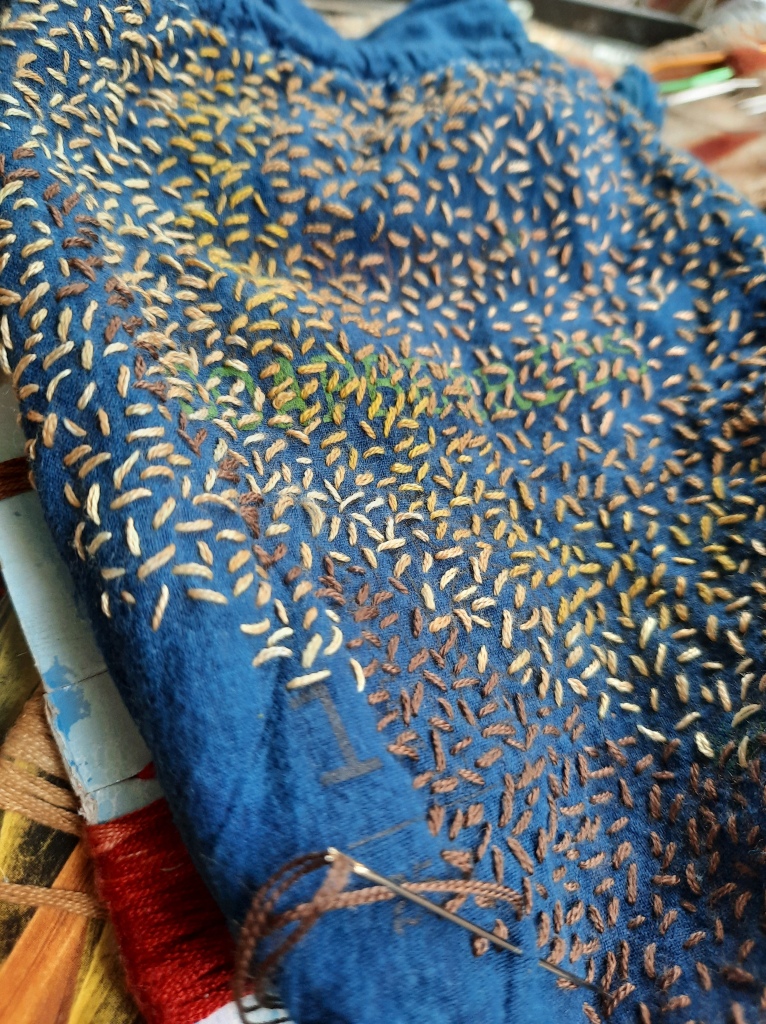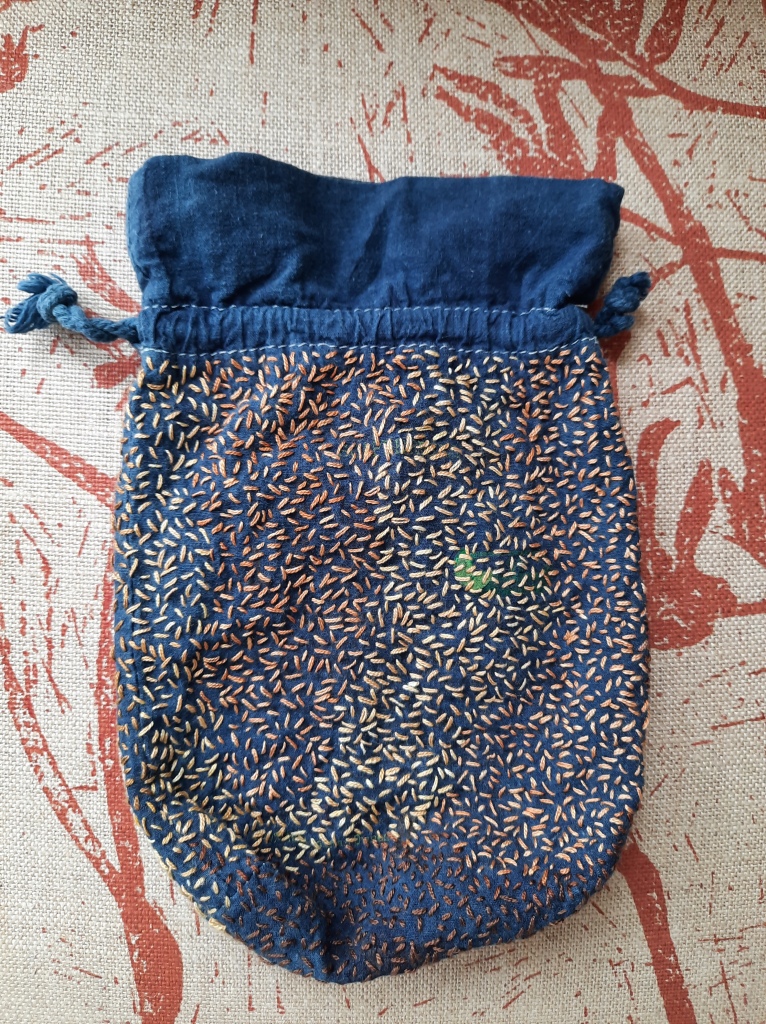I often think about the balance between individual action and collective action. I don’t place a huge amount of store by individual action. It is important, yes, up to a point. But if we want to rise to the collective challenge of the climate emergency we will need collective action as well. On the other hand–individual action is about engaging one’s own ethics, and it is highly educational. When I think about the amount of effort I put into avoiding plastic, I can see how thoroughly entrenched the fossil fuel industry is, in every aspect of our lives, and how hard it is to disengage from that without wider policy change. My diligent efforts have never extracted me from this. And nor can I find enough hours in the day to address all the textile waste going on around me.

I have been helping a dear friend with the textiles left in her family home after her parents died, and despite their extreme frugality, their mending and care for clothing, their dust coats and pinnies (aprons–) there is a lot of work to be done to attempt to deal with what remains in any ethical and thoughtful way. I have a lot of knowledge and capacity in this area these days and even so, I’ve found myself profoundly challenged. If I can keep to posting regularly, more on this later! But for now–all this is to say that it is heartening to see things that are thoughtfully packaged. Such as some soap nuts that a friend had bought, that came to me for some reason. These are just what they sound like: the fruit of a tree that contains a soap-like compound, that you can use to wash your clothes (and depending on your commitment and your assessment of the outcome–so much more!) They came in a nicely made, calico bag printed with the details of the contents. To my mind, really overpackaged. That is a biodegradable package (apart from the thread, as it turned out)–but quite a precious one in terms of the resources and time needed to create it.

This creates a different kind of issue: what to do with this calico bag? In the end, I decided to overdye it with indigo, so that the printing would be less visible. The images above are pictures of my indigo vat, living in a barrel gifted to me by generous friends, and in health after a year of dormancy. This took weeks of daily thought, learning and adjustment, and an epic day scouring my city for needed ingredients! My dyeing efforts were only partially successful. The printing resisted the dye. So then, to stitching.

This image doesn’t do justice to the colours involved, but you can see my problem with the printing!

I had wanted to try this kind of stitching for ages, and as usual, a low stakes opportunity like a recycled soapnuts bag is just the kind of opportunity I will grab with both hands and lavish hours of effort on! The thread is silk embroidery thread dyed with all kinds of plants over a considerable period.

Little by little, the text on the bag largely disappeared (and certainly drew the eye a lot less), and to me it now looks more like a treasure pouch and less like a piece of packaging.


This is a wonderful result. Like you I fully appreciate that even insatiable textile people cannot deal with every last piece that comes their way. I try not to despair but hope I can find reasonable use for things.
LikeLiked by 1 person
Thanks Leonie! Yes, we have to set reasonable expectations for ourselves, don’t we?
LikeLiked by 1 person